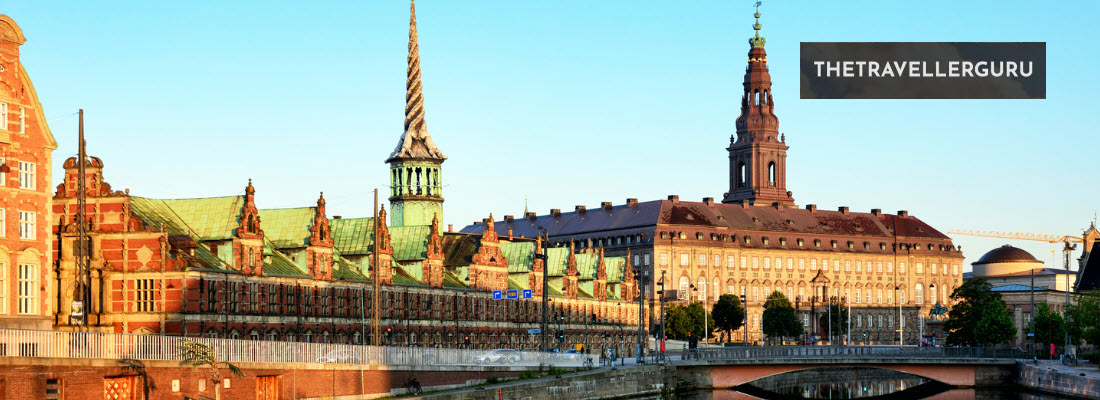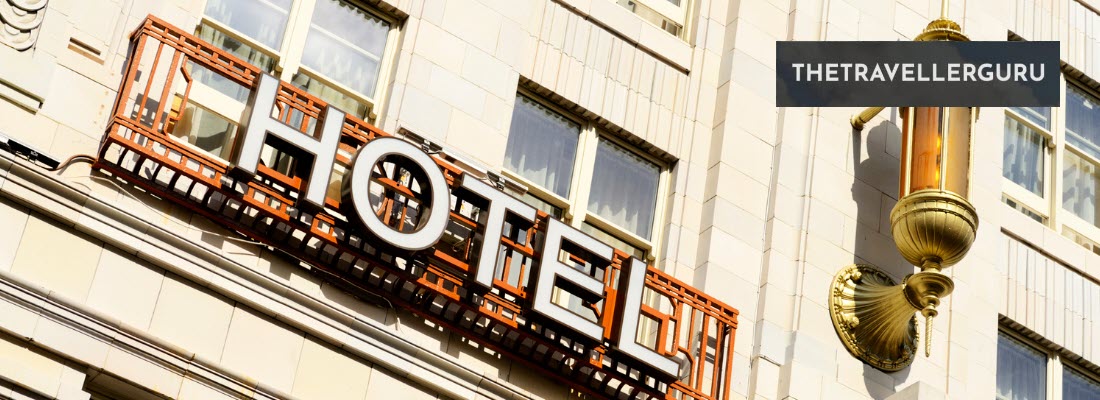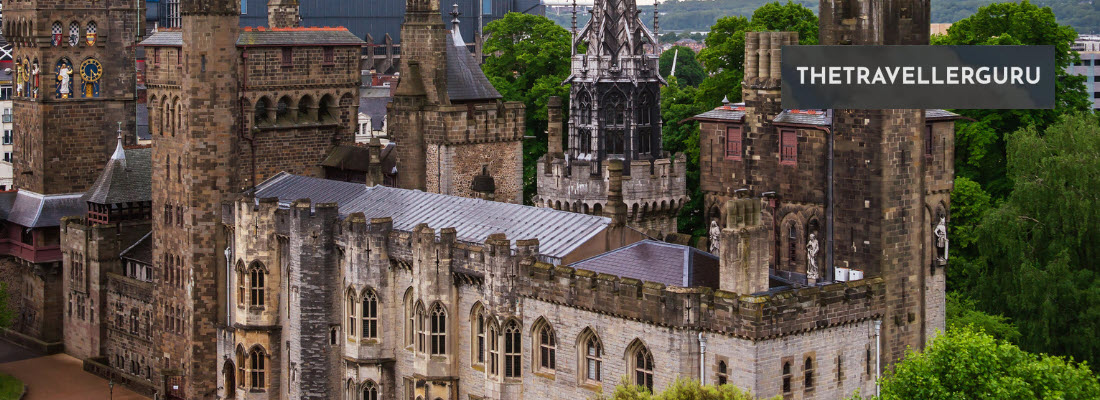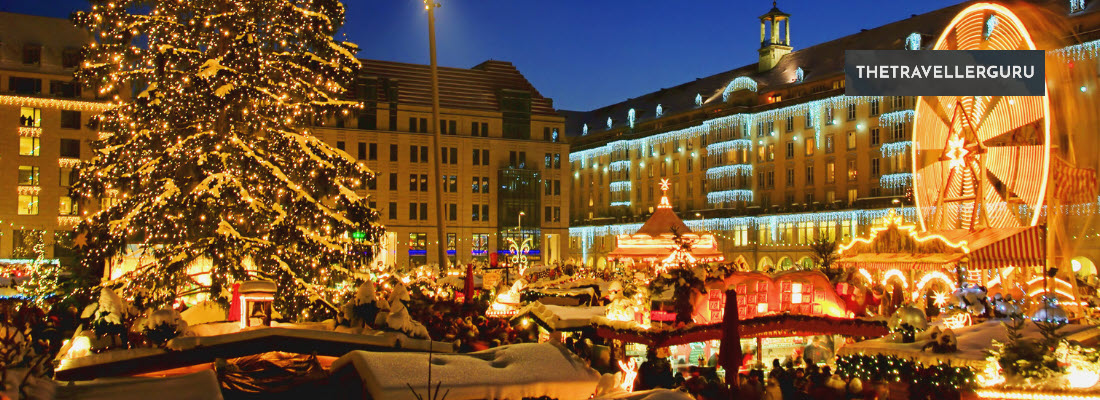Hey there fellow travelers and welcome to my post where we will cover 10 ways to spend one day in Copenhagen. Now, we all know the joys that travel can bring, from visiting far off places, experiencing different cultures and of course, all the new foods. But there is also a downside, – that dreaded day to ‘waste’ in a city whilst waiting for a midnight flight.
So if you are like me (as I live in Australia, all outgoing flights seems to leave late at night), there has been many a day where you need to find something to do that is enjoyable, but doesn’t take too much time – or cost too much money. So if you have a long layover or a day to kill in Copenhagen, here are 10 things you can do to pass the time in an enjoyable way.
Let’s check them out
- Tivoli Gardens
- Nyhavn
- The Little Mermaid Statue
- The National Museum of Denmark
- Christiansborg Palace
- Rosenborg Castle
- The King’s Garden
- Round Tower
- The National Gallery of Denmark
- Danish Cuisine
Ways To Spend One Day In Copenhagen
Copenhagen is a city full of history, culture, and charm. If you only have one day to explore, you’ll want to make the most of your time. Here are some of the top single day attractions in the city that you won’t want to miss.
1. Tivoli Gardens
Tivoli Gardens, located in the heart of Copenhagen, is not only one of the oldest amusement parks in the world but also a quintessential experience for any visitor to the city. Founded in 1843, Tivoli has enchanted visitors for generations with its unique blend of traditional charm and modern entertainment.
The park offers a range of attractions suitable for all ages, including classic roller coasters, carousels and more modern thrill rides. The Star Flyer, a carousel that offers panoramic views of the city, is a must-try for those seeking a blend of excitement and sightseeing.
Beyond the rides, Tivoli is also famous for its cultural offerings and the park hosts a variety of performances ranging from ballet and pantomime to modern concerts, often featuring international artists.
For dining, the park is dotted with charming restaurants and cafes, some of which offer scenic views of the gardens. In the evening, Tivoli transforms with its spectacular light show, making it a perfect place to end your day as well.
Check out these: World’s Safest Cities for Tourists
2. Nyhavn
Exploring Nyhavn is like stepping into a vibrant postcard of Copenhagen. This picturesque 17th-century waterfront, cana, and entertainment district is renowned for its brightly colored townhouses, historical wooden ships and lively atmosphere.
Originally a busy commercial port where ships from all over the world would dock, Nyhavn has transformed into a bustling hub of cultural and social activity, making it a must-visit destination in the city. As you walk along the canal, the sight of the old houses, some of which date back to the 1600s, offers a glimpse into Copenhagen’s rich history. Notably, the famous Danish fairy-tale writer Hans Christian Andersen lived in Nyhavn for several years.
Nyhavn is also a culinary delight with the quayside lined with numerous cafes, restaurants and bars, offering everything from traditional Danish dishes to international cuisine. It’s a perfect spot to enjoy a meal or a drink while soaking in the lively atmosphere and watching the bustling activity around the canal.
And finally, in addition to its dining and historical appeal, Nyhavn serves as a gateway to various canal tours that offer a unique perspective of Copenhagen from the water. These tours provide an excellent opportunity to see many of the city’s other attractions, including The Little Mermaid statue, the Opera House and the Amalienborg Palace as well.
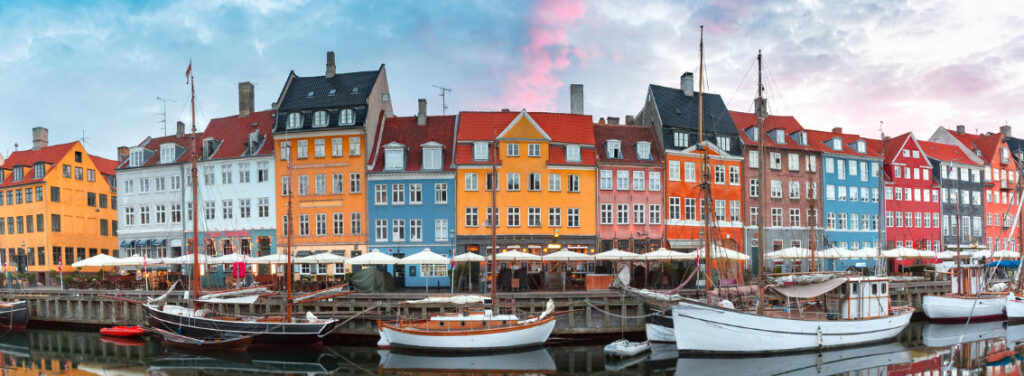
3. The Little Mermaid Statue
And while we are on the subject, seeing The Little Mermaid Statue is a quintessential part of any visit to Copenhagen. This iconic bronze statue, inspired by Hans Christian Andersen’s famous fairy tale, has been perched on a rock by the waterside at the Langelinie promenade since 1913. Created by sculptor Edvard Eriksen, the statue is a tribute to Andersen’s storytelling and has become a symbol of Copenhagen.
Despite its relatively small size, the statue’s allure lies in its delicate and poignant depiction of the mermaid, which has captured the hearts of visitors from around the world. The sculpture portrays the mermaid in a contemplative pose, gazing towards the shore, embodying the story’s theme of longing and transformation. This has made it not just a tourist attraction, but also a subject of artistic and literary inspiration.
Visiting the statue offers a serene experience, as it’s located in a peaceful area by the sea, allowing visitors to enjoy the scenic views of the water and the surrounding greenery. The location also makes it an ideal spot for a leisurely walk along the promenade, where one can appreciate the beauty of Copenhagen’s coastline.
Book your trip to Copenhagen here!
4. The National Museum of Denmark
As the country’s largest museum of cultural history, the National Museum of Denmark offers an extensive journey through time from the Stone Age, the Viking Age, the Middle Ages, the Renaissance and up to modern Danish history.
Upon entering, visitors are greeted with a vast array of exhibits that meticulously display the evolution of Danish and global cultures. One of the highlights is the prehistoric collection, which includes the famous Sun Chariot, a 3,400-year-old bronze artifact and the Egtved Girl, a well-preserved Bronze Age burial. The Viking exhibits are particularly fascinating, showcasing runestones, weaponry and artifacts that offer insights into the lives and voyages of the Vikings.
The museum also dedicates significant space to ethnographic collections, featuring exhibits from Greenland, Asia, Africa and the Americas, thus providing a global perspective. These collections are instrumental in understanding the cultural diversity and historical connections between Denmark and the rest of the world.
For families, the museum is particularly engaging, with a children’s museum section that offers interactive exhibits and activities designed to make history accessible and exciting for younger visitors. Here, children can dress up in historical costumes, explore a Viking ship, or visit a 1920s-style apartment.

5. Christiansborg Palace
Situated on the islet of Slotsholmen in the heart of the city, Christiansborg Palace is a unique building that houses the three supreme powers of the Danish realm:
- The executive power, represented by the Prime Minister’s Office
- The legislative power, with the Danish Parliament (Folketinget) seated here
- The judicial power, with the Supreme Court.
The palace’s architecture is a blend of different styles, reflecting its long history of reconstructions following several fires. The current structure, primarily in the neo-baroque style, offers a majestic sight with its imposing façade, intricate decorations, and the towering spire.
Visitors can explore several parts of the palace open to the public, including the Royal Reception Rooms adorned with exquisite tapestries, the Great Hall with its impressive murals, and the Royal Chapel, showcasing remarkable craftsmanship. The Palace also houses the Royal Stables and the Royal Kitchen, each offering a unique glimpse into the royal lifestyle.
One of the highlights of visiting Christiansborg is the opportunity to climb the palace tower, the highest in Copenhagen. The tower offers panoramic views of the city’s rooftops, spires and the surrounding waters providing a tangible sense of the city’s historical evolution and its contemporary vibrancy.
Moreover, Christiansborg Palace stands on a site with over 800 years of history, previously home to several castles and fortresses. The ruins of these earlier structures can be explored in the underground exhibition beneath the palace, adding an archaeological dimension to the visit as well.
6. Rosenborg Castle
Rosenborg Castle is a stunning 17th-century castle built in the Dutch Renaissance style that was originally constructed as a summer house by one of the most famous Scandinavian kings, Christian IV. Today, it stands as a testament to the splendor of the Danish monarchy and houses some of Denmark’s greatest cultural treasures including the Crown Jewels and the Danish Crown Regalia.
he castle is surrounded by these lush gardens, which are the oldest Royal Gardens in Denmark and provide a serene and picturesque setting. The gardens themselves are a popular destination, perfect for leisurely strolls and picnics, especially during the warmer months.
The interior of Rosenborg is richly decorated and well-preserved, offering a glimpse into the life and times of the Danish royals. The castle’s rooms are filled with exquisite tapestries, portraits, rich furnishings and ornate decor where one of the most notable rooms is the Knights’ Hall, which houses the coronation thrones and three life-size silver lions standing guard.
The highlight for many visitors is the Treasury, where the Crown Jewels and Royal Regalia are displayed. These treasures include crowns, scepters, orbs and other symbols of royal power, adorned with precious stones and intricate designs. The craftsmanship and history behind these items make them not only a display of wealth and power but also of artistic and cultural significance too.
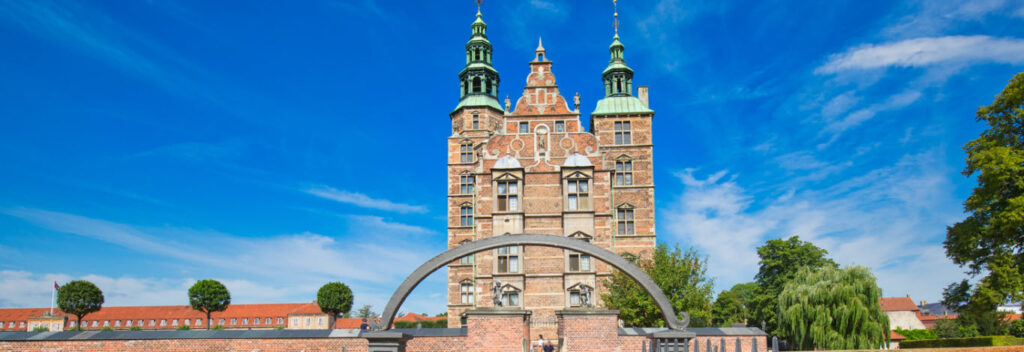
7. The King’s Garden
Strolling through The King’s Garden, known in Danish as Kongens Have, is a delightful experience, offering a tranquil escape in the heart of Copenhagen. Established in the early 17th century as the private gardens of Rosenborg Castle, these are the oldest Royal Gardens in Denmark and have since evolved into a beloved public space, cherished by both locals and tourists alike.
The gardens are a harmonious blend of manicured lawns, symmetrical flower beds and meandering pathways, interspersed with statues, fountains and historical buildings, including the Rosenborg Castle which forms a majestic backdrop.
The King’s Garden serves as a social hub and a cultural venue and during the summer months, it becomes a lively gathering place for picnics, sunbathing and leisurely walks. The garden’s open spaces are often used for concerts, theater performances and exhibitions, making it a center for cultural activities in the city. For families, the garden is particularly appealing, with playgrounds and areas where children can explore and play.
Book your trip to Copenhagen here!
8. Round Tower
The Round Tower, or Rundetårn, is a 17th-century tower built by King Christian IV that is not only a significant historical monument but also an architectural marvel. It was originally constructed as an astronomical observatory, part of the Trinitatis Complex, which included a university library and a church. Today, it stands as one of Copenhagen’s most iconic landmarks, attracting visitors from around the world.
The most distinctive feature of the Round Tower is its 209-meter long spiral ramp, which gently ascends seven and a half turns to the top. the ramp was uniquely designed to accommodate horse-drawn carriages, a testament to the innovative design of the era.
As you reach the top of the tower, you are rewarded with a breathtaking panoramic view of Copenhagen with an observation deck offers a 360-degree vista of the city’s rooftops, spires and streets, providing a unique perspective on the Danish capital. On a clear day, you can see across the rooftops to the Øresund Bridge and even to Sweden.
The Round Tower also hosts a small exhibition area where visitors can learn about its history as an astronomical observatory and its role in the scientific advancements of the time. The tower’s original telescope is also on display, showcasing the tools used by astronomers to study the stars and planets.

9. The National Gallery of Denmark
The National Gallery of Denmark, also known as Statens Museum for Kunst (SMK), is the largest art museum in Denmark and houses an impressive collection of Danish and international art spanning seven centuries. From European classics to modern art, the museum offers a comprehensive overview of artistic styles and movements, making it a key cultural destination in the city.
The original building, with its classicist style, is complemented by a modern extension reflecting the museum’s fusion of historical and contemporary art. This architectural harmony sets the tone for the diverse and rich collections housed within.
The museum’s collections are divided into several sections, each offering a unique journey through the world of art. The European Art 1300-1800 section showcases masterpieces from the Renaissance to the Baroque period, featuring works by renowned artists such as Mantegna, Titian and Rubens. The Danish and Nordic Art 1750-1900 section highlights the Golden Age of Danish painting, with works by artists like Christen Købke and Vilhelm Hammershøi, offering insights into the region’s artistic heritage.
One of the highlights of the SMK is its collection of modern and contemporary art, which includes works by leading figures such as Picasso, Matisse and Danish avant-garde artists. This collection not only displays significant works from the 20th and 21st centuries but also explores the evolving nature of art and its reflection of societal changes.
In addition to its permanent collections, the SMK regularly hosts special exhibitions, workshops and cultural events, making it a dynamic hub for art and creativity. The museum also places a strong emphasis on accessibility and education, offering guided tours, lectures and activities for all ages, ensuring that art is approachable and enjoyable for everyone.
10. Danish cuisine
And as you enjoy all of the above, you are bound to get hungry. Hence enjoying Danish cuisine is an essential part of experiencing the culture and traditions of Copenhagen. Danish food, often characterized by its simplicity, quality of ingredients and the balance of flavors, offers a unique and delightful culinary journey.
One of the most iconic elements of Danish cuisine is the smørrebrød, an open-faced sandwich typically made with a piece of buttered rye bread (rugbrød) topped with a variety of ingredients such as cold cuts, meats, fish, cheese or spreads. These sandwiches are not only delicious but also a work of art, often beautifully arranged and garnished with herbs and edible flowers. Smørrebrød is a staple in Danish lunch culture and can be found in many cafes and restaurants throughout Copenhagen.
Another key aspect of Danish cuisine is its emphasis on locally sourced and seasonal ingredients. This is evident in traditional dishes such as stegt flæsk (crispy pork with parsley sauce), which is considered Denmark’s national dish and frikadeller (Danish meatballs). Seafood also plays a significant role, with herring being a popular choice, often served pickled or smoked.
For those with a sweet tooth, Danish pastries, known locally as wienerbrød, are a must-try as well. These pastries, which come in a variety of shapes and fillings, are characterized by their flaky, buttery texture and are a perfect accompaniment to a cup of coffee.
In addition to traditional fare, Copenhagen’s food scene also boasts a range of gourmet restaurants, including several Michelin-starred establishments, where innovative chefs are reinterpreting Danish cuisine with modern techniques and international influences. This new wave of culinary creativity has put Copenhagen on the map as a world-class food destination.
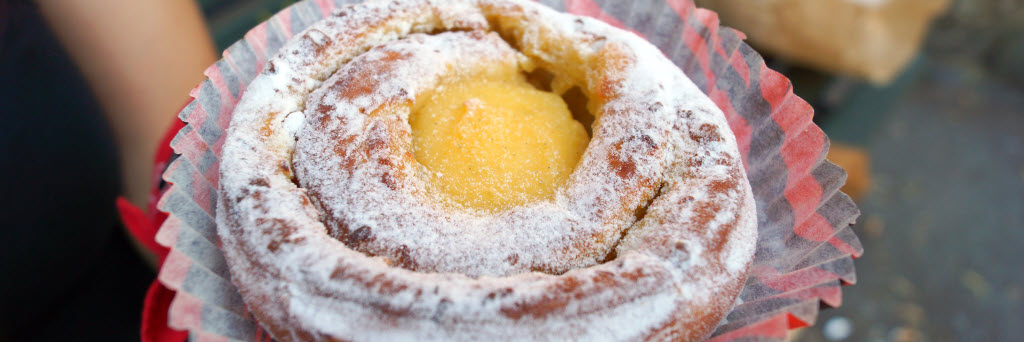
Getting Around Copenhagen
When it comes to getting around Copenhagen, you have a few options to choose from. Here are some of the best ways to explore the city in one day:
Public Transport
Copenhagen has an extensive public transport system that includes buses, metro and trains. The easiest way to get around is to buy a City Pass, which gives you unlimited travel on all modes of public transport for 24 hours.
You can buy the City Pass at any metro station or online.
Bike Rentals
Copenhagen is known for being a bike-friendly city and renting a bike is a great way to see the sights. There are several bike rental companies in the city and prices vary depending on the type of bike you want.
Some companies also offer guided bike tours, which can be a fun way to learn about the city’s history and culture.
Copenhagen Card
If you plan on visiting several attractions in one day, consider purchasing a Copenhagen Card. This card gives you free admission to over 80 museums and attractions, as well as unlimited travel on public transport.
The card is available for 24, 48, 72, or 120 hours, and can be purchased online or at tourist information centers throughout the city.
FAQs
Top things to do in Copenhagen in 24 hours
With only 24 hours in Copenhagen, it’s important to prioritize your time. Start your day with a visit to the iconic Little Mermaid statue, then head over to the colorful houses of Nyhavn for a photo opportunity. From there, explore the historic Rosenborg Castle and its beautiful gardens. Don’t forget to stop by Tivoli Gardens, the second-oldest amusement park in the world, and end your day with a canal cruise to see the city from a different perspective.
How to make the most of your Copenhagen Card in one day
The Copenhagen Card is a great way to save money and time, especially if you’re only in the city for one day. With the card, you’ll have access to over 80 attractions and free public transportation. To make the most of your card, plan your day around the attractions that interest you the most and use the free transportation to get around the city quickly and easily.
Conclusion
There you have it; 10 things you can try if you find yourself in Copenhagen with a day to kill. As usual, let me know of your experiences here or if there is anything you think I need to add.
Also, please do not hesitate to comment below if you have any questions, concerns, or corrections or would like me to check anything else out for you.
Until next time.
Have fun
Paul
